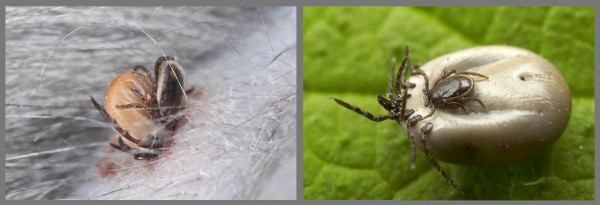Tick reproduction is closely associated with feeding as this is necessary for egg production. The blood consumed by a female tick will nourish her through egg production.
Certain pathogens of veterinary and medical importance can be transmitted transovarially to the offspring of female ticks. Many tick species can lay large numbers of eggs, so this mode of transmission is an efficient means of multiplying the pathogens (viruses, bacteria, rickettsia, or protozoans).

Most ixodid (hard tick) mating take place on the host and only after attachment, but there are exceptions in the genus Ixodes, where in some species, mating can take place prior to attachment to the host.
An adult female ixodid takes a single blood meal to increase her weight 100 times or more. Almost all the blood is converted into eggs for a single massive oviposition. Once mated, she will drop off the host to rest and incubate the eggs inside her for two or more weeks.
In adverse conditions a female will delay egg laying by entering a state called ‘diapause’, which is a decreased level of metabolism and a delay in growth, development, and reproduction. Once oviposition has taken place the female tick dies.
Argasid (soft tick) mating usually occurs off the host. Female argasids feed to increase their weight by 5-12 times and only a proportion of the blood is converted into a small clutch of several hundred eggs. Oviposition is usually related to the frequency of feeding, except in the case of certain argasids, which are able to oviposit without a blood meal (autogeny). The ability for a female ixodid to lay eggs without feeding has not been reported.

Tick reproduction video
(close-up images of a tick laying eggs)
Further details found by clicking on below links:-




